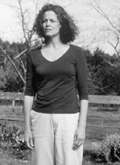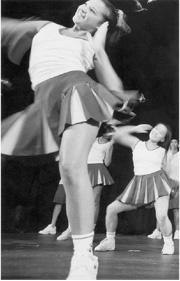BASING A MOVIE on a book is a cheap way to attract an audience. It’s also a practically surefire way to disappoint that audience, who expect faithfulness to their beloved text. So why is the box office so often littered with second-rate adaptations? Following on the heels of Girl, Interrupted and The Beach, Jane Hamilton’s highly praised 1994 novel A Map of the World is the most recent victim of Hollywood’s misguided attempts to popularize—and profit from— serious literature. Despite strong performances by leads Sigourney Weaver, David Strathairn, and Julianne Moore, the debut film by NYC stage director Scott Elliott is lacking on many fronts.
A MAP OF THE WORLD
directed by Scott Elliott
with Sigourney Weaver, Julianne Moore, and David Strathairn
opens March 3 at Broadway Market
The story, about an urban couple having a disastrous go at rural life in Wisconsin, shows how the stresses of displacement are compounded by the everyday demands of family. Weaver plays Alice, the frazzled wife of Howard (Strathairn), a city slicker who’s probably read too much Wendell Berry. That it was his idea to start living off the land alerts us to Alice’s disadvantage in adapting to their new lifestyle. In voice-over, she rhetorically asks, “What did I know about living on a farm?” Besides, she’s got more than enough on her plate: a messy house with clothes and toys strewn all over the floor, two noisy young daughters (the oldest given to screaming, “I hate you, Mom!”), an oblivious husband who seems just a little too late for everything. Why Alice puts up with this maelstrom of a life in the first place is a mystery that would have made a more interesting film. Who needs an accidental death, accusations of child abuse, and a stay in jail when Alice is already teetering on the edge?
Her increasing lack of control over her life contrasts with Theresa (Moore), her pretty friend who has an immaculate house, two well-behaved daughters, and an enthusiasm for videos on better lovemaking. While the drowning of Theresa’s daughter causes grief and a rift in the women’s friendship, it’s Alice who ends up suffering more—descending into depression and erratic acts of self-destruction. Yet despite its loyalty to the book, the movie often misses the emotional topsy-turviness of Alice’s psyche. The titular map—which Alice created as a child to gather her bearings during her mother’s death—feels like a tacked-on metaphor. In the end, this faithful adaptation comes across as merely a paint-by-the-numbers picture.







